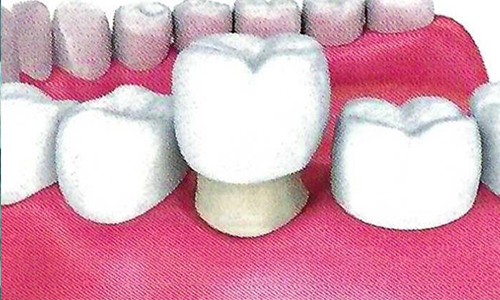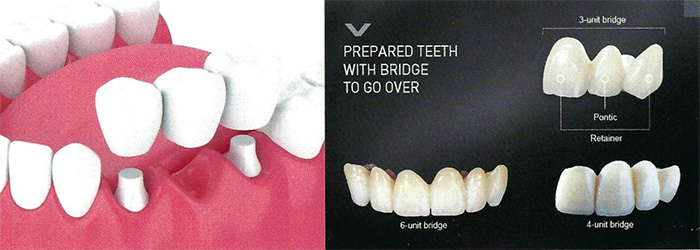CROWN AND BRIDGES
OVERVIEW
All your teeth play an important role in speaking, chewing, and in maintaining proper alignment of other teeth. Tooth loss does not necessarily have to occur as you age. But if you do lose teeth, they must be replaced to maintain proper function of your mouth. Fortunately, there are options for correcting tooth loss.
KEY BENEFITS OF
A DENTAL CROWN:
Replaces missing teeth
Offers support to misplaced teeth or broken teeth
Looks completely natural
Repairs smile and functional chewing problems
WHAT ARE THE CAPABILITIES OF A DENTAL CROWN?
Crown and bridgework are exceptionally reliable solutions for major dental problems caused by accidents, diseases, or wear and tear. Major problems can usually be corrected using these techniques. Materials used in these repairs are either high-grade porcelain or porcelain bonded to gold.
A higher strength of the porcelain and gold materials is recommended to treat the most serious dental problems. In instances where damage has occurred resulting in the loss of teeth , where teeth have broken away through excessive wear, or tooth damage caused by old fillings breaking down, crowns and/or bridges can be used as a long-term solution.
Many people have unexplained pain from filled back teeth that is are usually due to hairline cracks in the chewing part of the tooth. Placing crowns on these teeth relieves the pain and allows a return of full dental function.
In front teeth, older fillings can both weaken the teeth and cause appearance problems due to staining or chipping. Porcelain crowns and bridges are suitable in cases where porcelain veneers are not. In teeth with root canal fillings, crowns can prevent breakage.
DENTAL BRIDGE OPTIONS
A bridge – a device used to replace missing teeth – attaches artificial teeth permanently to adjacent natural teeth, called abutment teeth.
If you are missing one or more teeth, you may be aware of their importance to your appearance and dental health. Your teeth work together for many daily functions from eating to speaking.
With missing teeth, it is difficult to do these things. Missing teeth can and should be replaced. Missing teeth can cause a variety of problems from shifting of adjacent teeth, esthetic plane corruption, compromise of restorative space that is available for crowns, and surgical space that is available for implants. Fixed bridges are a great way to restore your dental health and appearance.
Replacement of
single Tooth
Implants not indicated due to compromised systematic health
Compromised bone quality and quantity
Patient’s age, in this case, a bridge will act as a temporary restoration, once the patient is old enough, an implant can be placed.
No surgical space to
accommodate implants.
THE All-on-4®TREATMENT PROCESS:
Exam
This is the appointment where we will go over the final treatment plan and present to you the final costs. Once everything is ready to go, you will be able to schedule your actual procedure.
Surgical Procedure
Fabricating your permanent teeth

